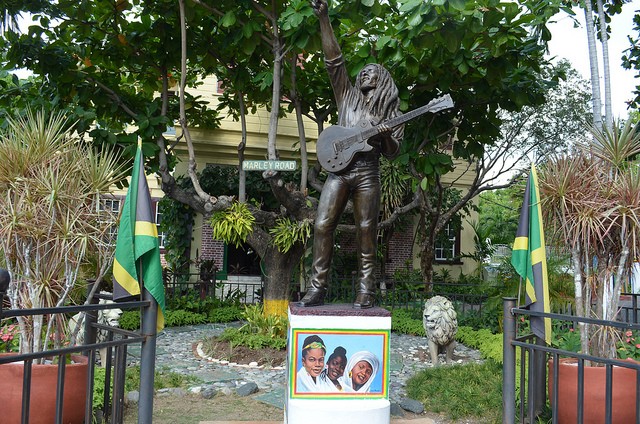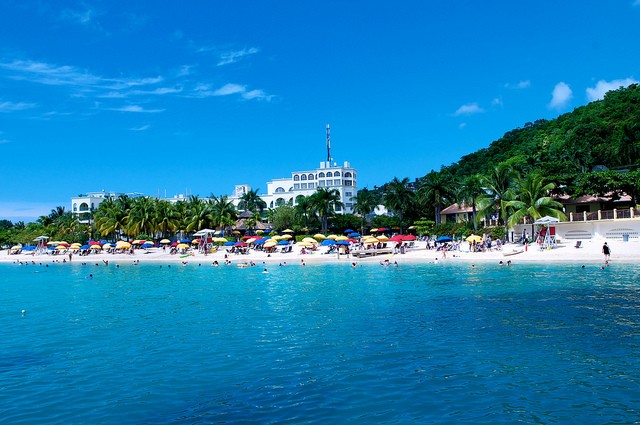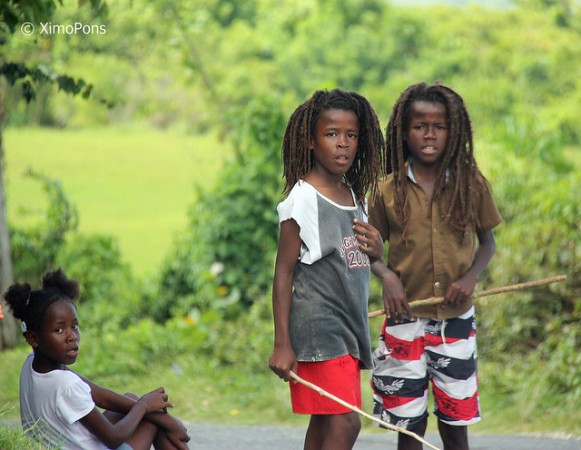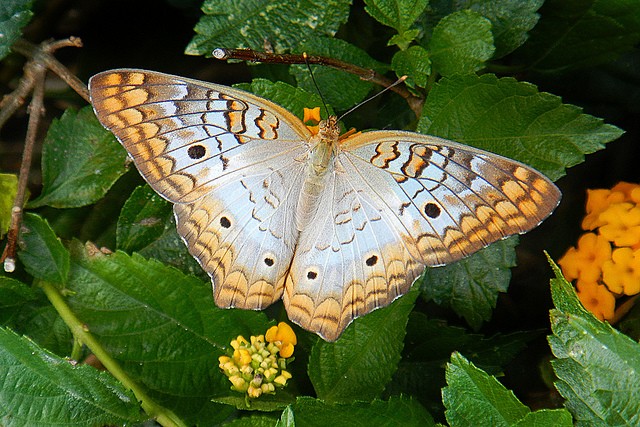 the Travel Enthusiast
the Travel Enthusiast
- 21 May
Adam in Amazing Places | NO COMMENTSJamaica, The Land of Wood and Water
Jamaica is one of the most renowned island of the Caribbean. Famous for its excellent beaches and fine bays and also has an outstanding natural landscape. It lies south of Cuba and west of Haiti.
The capital city of Jamaica is Kingston. The total area of the country is 10.991 sq km and the coastline is 1,020 km. Jamaican Dollar is the currency of the country.
The official and national language of the country is English.
The political status of the country is monarchy, the current head of state being Queen Elizabeth II.
The Infrastructure and transportation in Jamaica is in a very good condition. 70% percent of the roads are paved and are quite modern. On the other hand, however, there is no railway. There are 22,120 km of roads inside.
The two international airports are Norman Manley International which lies 17 km of Kingston and Montego Bay International.
Kingston has also a main port(18 vessels) where supplies such as petroleum, lumber, food, floor and cement arrive.
The Jamaican economy goes well, being relatively rich. The primary sectors of the country are mining, agriculture, tourism and manufacturing. Despite the entire situation, it faced serious issues during the 90’s, forcing many Jamaicans to emigrate to countries like United States, Canada, The United Kingdom and others. Nevertheless, it started to increase again in recent years.
Popular tourist attractions of the country are:
- Blue and John Crow Mountains is a national park and home for two rare species like the Giant Swallowtail Butterfly and the Jamaican Blackbird. It is renowned for its sweeping biodiversity, having many uncommon flora
- Boston Bay Beach. This is Jamaica’s best surfing spot and is located near the town of Port Antonio
- Reggae Beach. One of the most beautiful beaches in Jamaica and also famous for its vibrant beach parties and local reggae concerts.
- Doctor’s Cave Beach has the reputation for being the most popular beach of the country and also for its beautiful resorts, bars, clubs and restaurants.
The climate of the country is tropical. The temperatures usually ranges from 22 to 34 Celsius degrees. Jamaica is prone to lots of hurricanes because of its location.
The topography is mostly made of mountain ranges with long and beautiful coastlines. The highest mountain of Jamaica is Blue Mountain( 2,256 metres)
The vegetation of the island (especially when it comes to tropical forests) is one of the richest and vast on the Caribbean. More than 3.000 types of flowers are present from orchid species to cactus as well different kinds of palm trees. 40% of Jamaica is covered by forests. The Fauna is is also dynamic. It is the home for unique Bird species, crocodiles, lizards and snakes.
The total population is around 2,700.000 people and 52% of them live in urban areas.
The main ethnicity is African descent (91%) while the rest are Europeans, Chinese and Indians (9%)
The Rastafarian movement was found here in Jamaica, and the religion itself is popular in the country. Despite that, freedom of religion is granted and protected and the predominant religion is Christianity.
The health care system is good. More than 20 hospitals(both public and private) are widespread throughout the country. Patience pay relatively low fees for medical health care. The life expectancy in Jamaica is 73 years. Infant mortality is low, 14 out of 1000 births, however Jamaica has a higher rate of HIV positive people, despite being a developed country.
- Flights
- Hotels
- Packages
- Cars
- Cruises
travel search by Travelgrove (get this widget)Immigration and customs in the country is very severe. Most foreign visitors are required to have a VISA. Prohibited imports are coffee and honey.
Traveling within the country is mostly safe and easy. Like most former British colonies, the traffic is on the left side. Taxis and buses are widely available. A person must over 25 to rent a car.
The Brief History of Jamaica.
It is unknown what or who lived on the island before the colonization era. The earliest known history was that during the 15th century the Arawak indigenous people lived and ruled the island when Christopher Columbus arrived on the island in 1494. They were skilled in pottery and textile making as well as agriculture. It was used as a staging post because it lacked gold.
Initially a Spanish Colony, they killed every Arawak indigenous people since they refused to surrender or to convert. They used the people as slaves. By 1665 there were no Arawak people left yet African slaves were brought and replaced them.
In 1645 the British seized Jamaica from the Spanish and from that moment on there was constant raids by pirates. Britain finally gained the island in 1670 and made it officially a colony. It is one of the the oldest colonies in British history.
Despite being used initially as a slave market, the British authorities recognized their freedom and gave them rights and property ownership’s in the 18th century.
Slavery had its own positive effects. Products such as coffee, cocoa, sugar and indigo farmlands flourished. During the Napoleonic wars the country was already very affluent and exported coffee and sugar. However, because of the abolishment of slavery in the 19th century, the sugar price dropped, worsening Jamaica’s economy.
Throughout the 19th century and early 20th century, violence and rising was widespread in Jamaica, protests, killings and executions were being held.

The Bob Marley Museum in Kingston. One of the well known founding fathers of Reggae was born here ©Kent MacElwee/flickr
It was the year of 1938 when movements for independence started. Like the majority of the British Empire, Jamaica also started gaining slowly but surely independence step by step. The executive council was established in 1944 and in the 1950’s many ministers achieved great posts.
It had full internal government in 1958 and finally gained total independence in from the United Kingdom in 1962. Besides gaining independence, the economy started to increase highly thanks to its Banana industry and tourism.
You might also like



